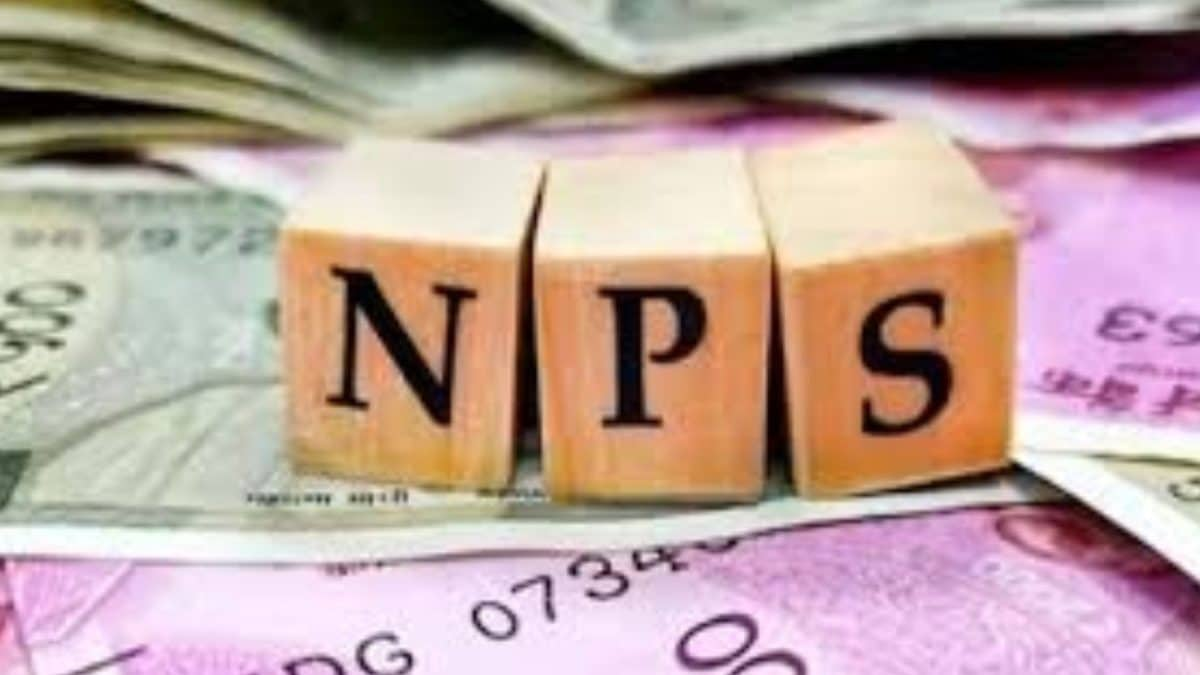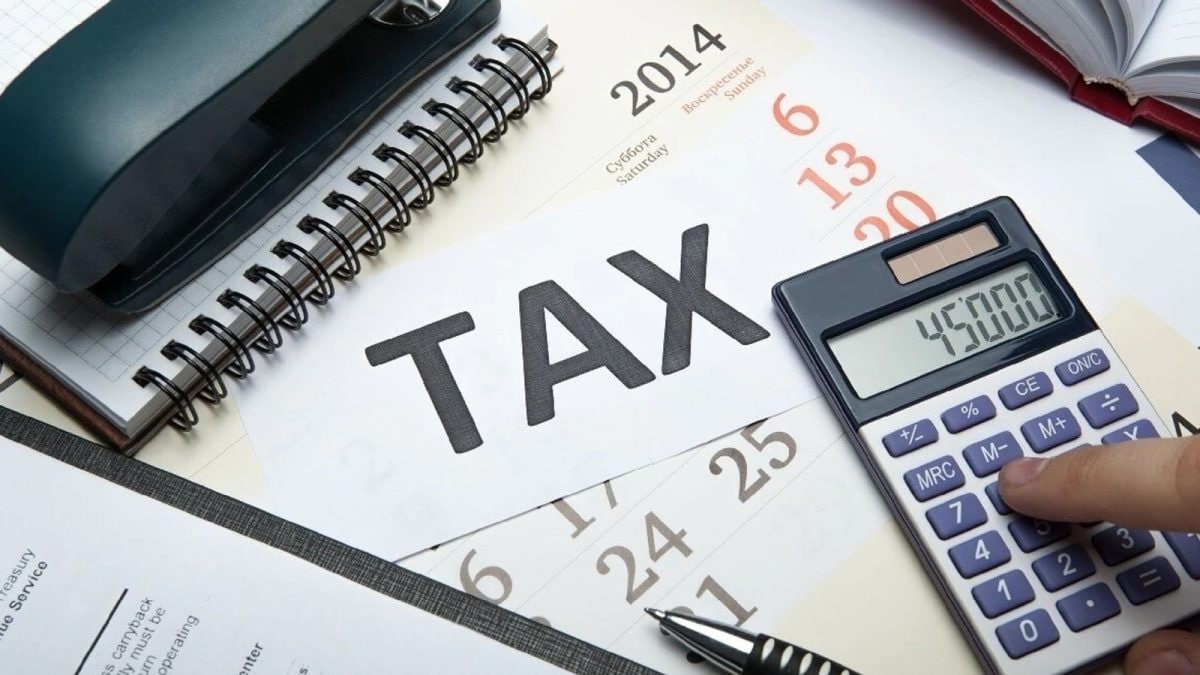Business
Renewable Player Prozeal Green Energy Gets SEBI Nod for Rs 700 Crore IPO

Last Updated:
PROZEAL Green Energy Limited gets SEBI approval for ₹7,000 million IPO, with strong growth in solar EPC projects, major clients, and robust financials for Fiscal 2024.

Solar EPC Firm Prozeal Green Energy Gets SEBI Go-Ahead for Rs 700 Crore IPO
PROZEAL Green Energy Limited gets market regulator Securities and Exchange Board of India approval to raise capital from the primary market via IPO.
Initial public offering of face value of ₹ 2 each (“equity shares”) of Prozeal Green Energy Limited (“our company” or the “issuer”) aggregating up to ₹ 7,000.00 million (the “offer”).
The offer comprises of a fresh issue of face value of ₹ 2 each aggregating up to ₹ 3,500.00 million (the “fresh issue”) and an offer for sale of up of face value of ₹ 2 each aggregating up to ₹ 3,500.00 million (the “offer for sale”), consisting up to ₹ 1,685.00 million by Shobit Baijnath Rai and up to ₹ 1,685.00 million by Manan Hitendrakumar Thakkar (the “promoter selling shareholders”), up to ₹ 30.00 million by AAR EM Ventures LLP, up to ₹ 20.00 million by Bhaveshkumar Bachubhai Mehta, up to ₹ 60.00 million by Jaya Chandrakant Gogri and up to ₹ 20.00 million by Manoj Mulji Chheda (the “investor selling shareholders”) (the promoter selling shareholders along with the investor selling shareholders, the “selling shareholders” and such equity shares, the “offered shares”).
The company proposes to utilize the Net Proceeds from the offer towards Funding the long-term working capital expenditure of the company, investment in the subsidiary(ies) for repayment/pre-payment, in part or full, of certain borrowings, and general corporate purposes.
Nuvama Wealth Management Limited, and SBI Capital Markets Limited are the Book Running Lead Managers to the issue.
Prozeal Green Energy is focused on delivering end-to-end renewable energy solutions, including engineering, procurement, and construction (EPC) of solar energy projects on a turnkey basis, with an emphasis on serving clients in the commercial and industrial sectors. While the company executes independent solar EPC projects for its clients, its major focus is on implementing projects based on the “Plug-and-Play” solar park model. Under this model, the company facilitates seamless project deployment from conceptualization and land acquisition to commissioning and assists with obtaining the necessary approvals, including for evacuation lines from the solar power plant to the electricity grid. This process is complemented by its expertise in project design, execution capabilities, and procurement strategies.
The company provides clients with customized solutions, including options for Capex or Opex models, land purchase or lease, and the selection of suitable technology. Since its inception in 2013 through September 30, 2024, Prozeal Green Energy has successfully executed 182 solar power projects with a total installed capacity of 783.98 MWp across 17 states in India and one overseas location (Nepal) for 125 clients.
Prozeal Green Energy’s EPC clients include prominent organizations such as Torrent Power Limited, AM Green Energy Pvt Ltd, GHCL Ltd, Alembic Pharmaceuticals Limited, Asahi Songwon Colors Limited, Mark Alloys Private Limited, Ajay Costspin Industries, Pashupati Costspin Limited, and ACG Associated Capsules Private Limited.
As of September 30, 2024, its order book, defined as the amount payable under EPC contracts minus the revenue already recognized from those contracts, stood at ₹22,209.22 million, of which ₹22,093.04 million, or 99.48%, was for ground-mounted solar power projects.
Prozeal Green Energy has demonstrated strong financial performance, with revenue from operations increasing from ₹2,871.85 million in Fiscal 2022 to ₹9,488.82 million in Fiscal 2024, representing a CAGR of 81.77%. Revenue from operations for the half year ended September 30, 2024, was ₹4,685.40 million.
The company’s EBITDA grew from ₹115.44 million in Fiscal 2022 to ₹1,247.36 million in Fiscal 2024, reflecting a CAGR of 228.71%. EBITDA for the half year ended September 30, 2024, was ₹687.13 million.
Additionally, profit for the year increased from ₹100.71 million in Fiscal 2022 to ₹922.44 million in Fiscal 2024, representing a CAGR of 202.64%. Profit for the period for the half year ended September 30, 2024, was ₹515.95 million.

Varun Yadav is a Sub Editor at News18 Business Digital. He writes articles on markets, personal finance, technology, and more. He completed his post-graduation diploma in English Journalism from the Indian Inst…Read More
Varun Yadav is a Sub Editor at News18 Business Digital. He writes articles on markets, personal finance, technology, and more. He completed his post-graduation diploma in English Journalism from the Indian Inst… Read More
September 09, 2025, 18:39 IST
Read More
Business
Trump’s ‘Gold Card’ defines wealth as an ‘extraordinary ability.’ Immigration experts say it raises questions

President Donald Trump’s new “Gold Card” visa program uses a novel definition of wealth as a job skill to allow the overseas wealthy to bypass immigration rules and secure citizenship, according to immigration attorneys.
Trump last week announced the start of applications for the “Trump Gold Card,” a new investment visa for foreign nationals. In exchange for $1 million and a $15,000 processing fee, “Gold Card” applicants will get full-time residency in the U.S. in “record time,” according to the program’s website. The website also offers a “Corporate Gold Card,” allowing companies to pay $2 million to secure a “Gold Card” for an employee, and a “Platinum Card,” which offers special tax benefits and may eventually be offered for $5 million.
Only Congress can set immigration policy, meaning the president doesn’t have the power to create or destroy a visa program. So to create the “Gold Card,” Trump is effectively adding a new fee model to two existing programs – known as EB-1 and EB-2 – experts explained to CNBC.
The EB-1 and EB-2 programs are both employment-based programs aimed at attracting award-winning or celebrated professionals. The EB-1 program, nicknamed the “Einstein Visa,” is aimed at those with “extraordinary abilities” – such as scientists, artists, entrepreneurs, athletes and professors who have achieved “sustained international or national acclaim.”
The EB-2 is for researchers, scientists and others whose skills are useful to help solve national problems, like a leading cancer researcher developing new treatments, or a top energy scientist who can help expand the power grid.
White House officials say that the $1 million payment is proof that “Gold Card” holders are successful business people who meet the requirements for exceptional abilities. Anyone with $1 million to spend on a visa is likely to be a productive addition to the American economy and society, they say. Entrepreneurs who started companies overseas can come to the U.S. to expand or start new ventures, creating more jobs. Spending by the “Gold Card” wealthy is also expected to help real estate, the service economy and other industries.
“Why shouldn’t we expedite the people who are willing to step up, to give the United States $1 million,” Commerce Secretary Howard Lutnick told CNBC last week. “Let’s bring in the top of the top, the best. Why should we take people who are below average?”
Immigration attorneys, however, say that replacing highly skilled or celebrated talents with foreign nationals whose sole qualification is writing a $1 million check distorts the intent of the EB-1 and EB-2 programs. Not everyone with $1 million payment is a high-achieving businessperson or entrepreneur, they say. Some may have borrowed the money from friends, family or a lender. Others may have inherited their fortunes but have scant job skills.
“Having $1 million has nothing to do with your value as a person of extraordinary ability,” said Emily Neumann, an immigration attorney with Reddy Neumann Brown PC. “It doesn’t mean you are able to provide value to the United States of America. These categories were supposed to be reserved for people who can foster innovation and contribute to the economy and create jobs. There is no requirement that “Gold Card” holders have a track record of any of those things, just because they happen to have $1 million.”
While “Gold Card” applicants can’t legally skip the current waiting line for EB-1 and EB-2 holders, some attorneys fear the White House will give “Gold Card” applicants priority. Neumann said she has an Indian client who’s a leading expert in artificial intelligence and machine learning and is working on AI applications for doctors to better diagnose patients. He’s approved for the EB-1 but is still waiting on a green card, which could take years.
“They’re using up a limited number of green cards meant for people who have done wonderful things,” she said. “It’s a very different standard.”
Using the EB-1 and EB-2 programs for the “Gold Card” program has created other potential hurdles. While Trump has said he would sell “millions” of “Gold Cards,” and Lutnick said sales could raise $1 trillion in revenue, the two programs are capped at around 28,000 a year. Individual countries are capped at 7% of the total, which is why the the waiting list for E-1 and E-2 applications from India and China already extends for several years.
Immigration attorneys say India and China would be largest sources of demand for “Gold Cards.” Yet because of the waiting lists, few are likely to apply.
“If ‘Gold Card’ holders will be allowed to jump the queue, there will likely be lawsuits from those currently on the wait list,” said Reaz Jafri, an immigration attorney with the international law firm Withers. “And if not, who will want to pay the $1 million and then wait for three years?”
The unanswered questions and legal risks surrounding the “Gold Card” have caused potential buyers to hold off on applying, attorneys say. Dominic Volek, group head of private clients at Henley & Partners, said a number of his clients in Taiwan, Vietnam and Singapore are interested in the “Gold Card” but are waiting for proof that the program works.
Some are also worried about paying the $1 million and then having their visas overturned by a court or a future Democratic administration.
“They want to see the dust settle and see if there are any major legal challenges,” Volek said.
Another concern is the structure of the fee. While some national investment visas are more expensive – such as Singapore’s at nearly $8 million or New Zealand’s at nearly $3 million – they’re structured as investments rather than non-refundable payments. Without an explicit guarantee of a green card, the overseas wealthy are reluctant to pay the $1 million.
“It’s not clear if you make the payment once it’s approved or you provide the payment as evidence, or if it’s kept in escrow during the process,” Jafri said. “They haven’t addressed so many basic questions.”
Proof of funds is proving to be another hurdle for the overseas wealthy. In order to screen for money laundering or criminal activity, the U.S. government typically requires proof that the $1 million fee didn’t come from illegal or illicit sources. Many potential applicants from Asia, Africa and the Middle East are already balking at the demands, since financial documentation is not as thorough.
“The biggest sticking point for a lot of clients is being able to document the source of money,” Jafri said. “In certain parts of the world it’s not so easy to document.”
Business
NPS Gets A Major Overhaul In 2025: What The New Rules Mean For Your Retirement Money?

Last Updated:
In 2025, a sweeping set of reforms by the Pension Fund Regulatory and Development Authority (PFRDA) has been announced to make NPS more attractive, flexible, and investor-friendly.
Non-government subscribers with an NPS corpus of more than Rs 12 lakh can now withdraw up to 80% of their savings as a lump sum, with only 20% mandatorily allocated to an annuity.
The National Pension System (NPS) has been largely used for tax savings. In 2025, a sweeping set of reforms by the Pension Fund Regulatory and Development Authority (PFRDA) has been announced to make NPS more attractive, flexible, and investor-friendly.
Here’s a simple breakdown of what has changed.
Higher lump-sum withdrawals at retirement
One of the most significant changes is the higher cash withdrawal limit. Non-government subscribers with an NPS corpus of more than Rs 12 lakh can now withdraw up to 80% of their savings as a lump sum, with only 20% mandatorily allocated to an annuity. Earlier, 40% had to be annuitised, a provision that often reduced post-retirement returns.
New withdrawal slabs for smaller NPS corpus
PFRDA has introduced a new withdrawal framework based on corpus size, offering greater flexibility to investors with lower balances.
Subscribers with a corpus below Rs 8 lakh can withdraw 100% of the amount as a lump sum. Those with a corpus between Rs 8 lakh and Rs 12 lakh can choose between phased withdrawals using Systematic Unit Redemption (SUR), partial lump-sum withdrawal combined with annuity purchase, or higher lump-sum withdrawal depending on subscriber category.
Systematic Unit Redemption (SUR) introduced
A key structural reform is the introduction of Systematic Unit Redemption, which allows subscribers to withdraw their NPS corpus gradually over a minimum period of six years. This enables a steady post-retirement income stream without locking funds into an annuity.
Investment age limit extended to 85 years
Subscribers can now remain invested in NPS until 85 years of age, up from the earlier limit of 75. This benefits investors who want to delay withdrawals or continue compounding their retirement corpus beyond the traditional retirement age of 60.
More flexibility in partial withdrawals
Before turning 60, NPS subscribers can now make up to four partial withdrawals, compared with three earlier, with a minimum gap of four years. Withdrawals of up to 25% of own contributions are allowed for specified purposes such as education, marriage, home purchase and medical emergencies.
After 60, subscribers who continue investing can make partial withdrawals with a minimum gap of three years between transactions.
Multiple schemes under one NPS account
Non-government subscribers can now hold multiple schemes under a single PRAN, allowing them to diversify across fund managers and investment strategies without opening separate accounts.
100% equity option for long-term investors
From October 2025, private, corporate and self-employed subscribers can invest up to 100% in equities under the Multiple Scheme Framework, up from the earlier cap of 75%. This option is designed for younger investors with long time horizons who can tolerate higher volatility.
Switching between MSF schemes, however, is restricted for the first 15 years or until age 60.
NPS can now invest in gold, REITs and IPOs
NPS equity schemes are now permitted to invest in gold and silver ETFs, REITs, equity AIFs and IPOs. The combined exposure to these assets is capped at 5% of the equity allocation, offering diversification without excessive risk.
Scheme A discontinued: What subscribers must do
Subscribers invested in Scheme A, which focused on alternative assets such as infrastructure, must switch to Scheme C or Scheme E by December 25, 2025. The scheme is being phased out due to low participation and liquidity challenges.
Other investor-friendly changes
Several additional reforms have further improved NPS attractiveness. These include removal of the five-year lock-in for non-government subscribers, permission to pledge NPS corpus to obtain loans (up to 25% of own contributions), and enhanced tax benefits for NPS Vatsalya contributions under Section 80CCD(1B).
Clearer exit and family protection rules
Exit rules have also been streamlined. Subscribers who renounce Indian citizenship can withdraw their entire corpus. In the event of death, nominees or legal heirs receive 100% of the corpus if no annuity has been purchased. Interim relief provisions have also been introduced for cases where a subscriber is legally declared missing.
December 19, 2025, 16:15 IST
Read More
Business
India’s Net Direct Tax Collection Rises 8% To Rs 17.04 Lakh Crore On Higher Corporate Tax Mop-Up

Last Updated:
Net corporate tax collection during the period (April 1, 2025, to December 17, 2025) stands at about Rs 8.17 lakh crore, up from Rs 7.39 lakh crore in the same period of FY25.
India’s gross direct tax collection, before adjusting refunds, stood at over Rs 20.01 lakh crore so far this fiscal year, a 4.16 per cent growth over the year-ago period.
India’s net direct tax collection has increased 8 per cent to over Rs 17.04 lakh crore in the ongoing financial year so far, on higher corporate tax mop-up. Net corporate tax collection during the period (April 1, 2025, to December 17, 2025) stood at about Rs 8.17 lakh crore, up from Rs 7.39 lakh crore in the same period of FY25.
Refund issuances fell 13.52 per cent to over Rs 2.97 lakh crore between April 1 and December 17.
The country’s non-corporate tax, including individuals and HUFs, mop-up so far this fiscal year stood around Rs 8.46 lakh crore, up from about Rs 7.96 lakh crore in the same period last year.
Securities Transaction Tax (STT) collection stood at Rs 40,194.77 crore so far this fiscal year, marginally higher than Rs 40,114.02 crore in the year-ago period.
India’s gross direct tax collection, before adjusting refunds, stood at over Rs 20.01 lakh crore so far this fiscal year, a 4.16 per cent growth over the year-ago period.
In the current fiscal year, the government has projected its direct tax collection at Rs 25.20 lakh crore, up 12.7 per cent year-on-year. The government aims to collect Rs 78,000 crore from STT in FY26.
Rohinton Sidhwa, partner at Deloitte India, said, “Tax refunds issuance has dropped much below last year, while overall tax collection has grown marginally at 4%. The drop in refunds is being attributed to a higher amount of screening of any fraudulent refund claims. Holding back refunds also accelerates litigation that the tax department can ill afford. Overall, the corporate advance tax increase signals good corporate earnings. Non- corporate advance tax collections have, however, declined possibly on the back of rate cuts for individuals given in the previous Budget.”
December 19, 2025, 12:49 IST
Read More
-

 Business6 days ago
Business6 days agoHitting The ‘High Notes’ In Ties: Nepal Set To Lift Ban On Indian Bills Above ₹100
-

 Politics1 week ago
Politics1 week agoTrump launches gold card programme for expedited visas with a $1m price tag
-

 Business1 week ago
Business1 week agoRivian turns to AI, autonomy to woo investors as EV sales stall
-

 Sports1 week ago
Sports1 week agoPolice detain Michigan head football coach Sherrone Moore after firing, salacious details emerge: report
-

 Fashion1 week ago
Fashion1 week agoTommy Hilfiger appoints Sergio Pérez as global menswear ambassador
-

 Business1 week ago
Business1 week agoCoca-Cola taps COO Henrique Braun to replace James Quincey as CEO in 2026
-

 Tech1 week ago
Tech1 week agoGoogle DeepMind partners with UK government to deliver AI | Computer Weekly
-

 Sports1 week ago
Sports1 week agoU.S. House passes bill to combat stadium drones





